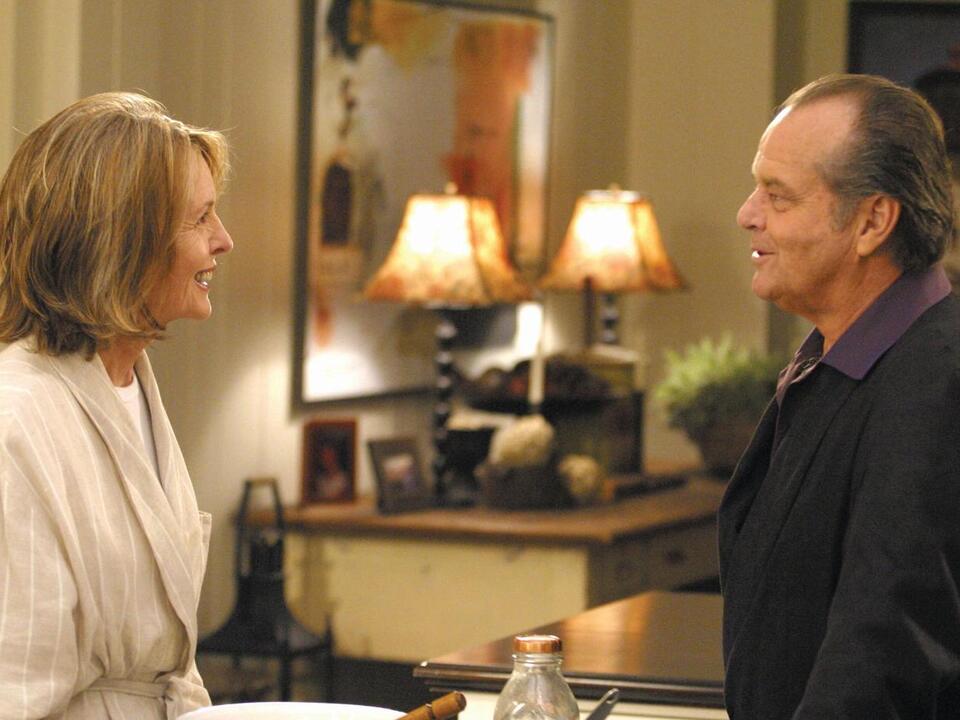Physical Address
304 North Cardinal St.
Dorchester Center, MA 02124
Physical Address
304 North Cardinal St.
Dorchester Center, MA 02124

In 2009, film-maker Nancy Meyers was in an editing suite at Sony Pictures, fine-tuning her next movie, “It’s Complicated”. That morning, her focus was the back garden of Jane, a successful Santa Barbara baker played by Meryl Streep. The garden included a lawn, a swing-seat, and a French-style potager garden where Jane could gather tomatoes in a wicker basket. Meyers had instructed an editor to erase dead trees and add a water feature, and began smoothing out the yard’s remaining foliage. Her instruction was clear: “Every plant that is spiky is removed from this movie. Keep it all soft.”
Meyers is one of Hollywood’s most commercially successful female film-makers. Known for productions like “Something’s Gotta Give”, “The Holiday”, and “What Women Want”, the aesthetic of her films has long been part of their allure. With elements like throws, cushions, candles, books, cut flowers, and high thread counts, her sets have been dubbed “the cashmere world of Nancy Meyers” – beige, unexceptional, yet endlessly coveted.
Though Meyers hasn’t made a film since 2015, her aesthetic has recently gained renewed attention. This year, Pinterest announced “Nancy Meyers’ Interiors” as its most-searched term. Home decorating magazines and social media have enthusiastically dissected the components of this look, from the depth of armchairs to the glow of lamps. This interest came after the popular TikTok term “Coastal Grandmother”, a lifestyle approach characterized by Diane Keaton in “Something’s Gotta Give”, featuring white linen, bucket hats, white wine, lobster rolls, farmers’ markets, and alfresco dining.
Meyers had a decade-long career before her 1991 reboot of “Father of the Bride”, but that film established her trademark look. The Banks family home, a colonial-style house with a white picket fence, had an interior warmed by natural wood, cream walls, and copper pans. By the time she directed “What Women Want” in 2000, she had begun working with Jon Hutman, who would become her longstanding production designer. This film contrasted the slick bachelor pad of womanizer Nick with the light and warmth of Darcy’s office, played by Helen Hunt.
Hutman and set designer Beth Rubino would later oversee the interiors of “Something’s Gotta Give” and “It’s Complicated”, two of Meyers’ most-loved films. “Something’s Gotta Give”, starring Diane Keaton and Jack Nicholson, had an $80 million budget. It was primarily set in the Hamptons home of Keaton’s character, Erica Barry, a sophisticated, successful playwright. The idea was to portray where such a woman would live. The house was filled with air and light, linen-dressed windows, lanterns, and candles, evoking a sense of the sand just outside the door. Rubino even spritzed suntan lotion in the air before the actors arrived each day.
Dr. Deborah Jermyn, associate professor in film at the University of Roehampton, notes, “There’s an air of privilege in how these spaces are designed.” Meyers’ homes are spacious and well-lit, featuring neutrals and whites. Maintaining such spaces is a sign of privilege. One defining component of these spaces is bowls of fruit, suggesting abundance and freshness rather than consumption. Meyers’ sets have a tactile quality with comforting textures, pillows, and throws that speak of comfort both physically and financially.
Over the years, questions have arisen about where Meyers’ taste ends and her characters’ begin. She started a cheesecake business to supplement her early writing career and grew up with a mother who renovated flea market furniture. When doing up her own home, Meyers meticulously pursued the perfect beige paint, eventually finding it in Australia.
Meyers’ Instagram page exudes familiarity: cream walls, linen curtains, a straw hat, and a lavender bush in bloom. Followers beg for another movie, expressing their love for her on-screen kitchens. Meyers cites film-maker François Truffaut: “Making movies is an accumulation of details.” She is known for her meticulous attention to every element of her sets, from thread count on sheets to books on bedside tables.
Such meticulousness is often lauded in directors like Wes Anderson and Tim Burton but for Meyers, it sometimes draws disdain. Critics suggest her focus on set details is due to simplistic characters or predictable stories. This criticism seems gendered, as domestic spaces in relationship films are not taken seriously. Yet, many fans find pleasure in these well-designed spaces.
Meyers’ recent revival coincides with a thirst for bland luxury, paralleling the “anaesthetised aesthetic” of social media. Trends like “old money style” and “cottagecore” explore comfort and quiet luxury. These interest in interiors hark back to 18th-century aesthetics discussed by philosophers like Immanuel Kant and David Hume, who debated why well-lit rooms and lush blooms are pleasing to the eye.
Hume introduced “sympathy” to explain why we esteem the rich and powerful. Their beautiful objects produce pleasure in owners, which others envy. Watching “It’s Complicated” when Streep and Martin are making chocolate croissants in a luxurious kitchen offers a similar pleasure. Meyers’ sets and her Instagram pictures evoke envy and a longing for such abundant beauty.
If we seek a historical parallel to Meyers, Edmund Burke’s “A Philosophical Enquiry into the Origin of Our Ideas of the Sublime and Beautiful” fits. Burke cherished smoothness, a quality essential to beauty, much like Meyers’ vision: keep it all soft.
Source: The Guardian



